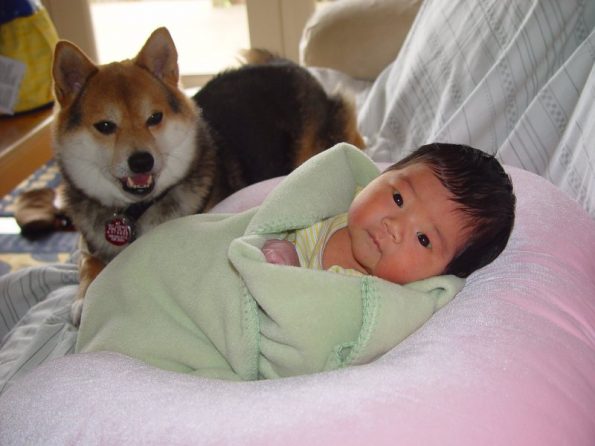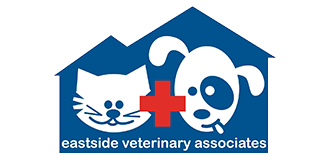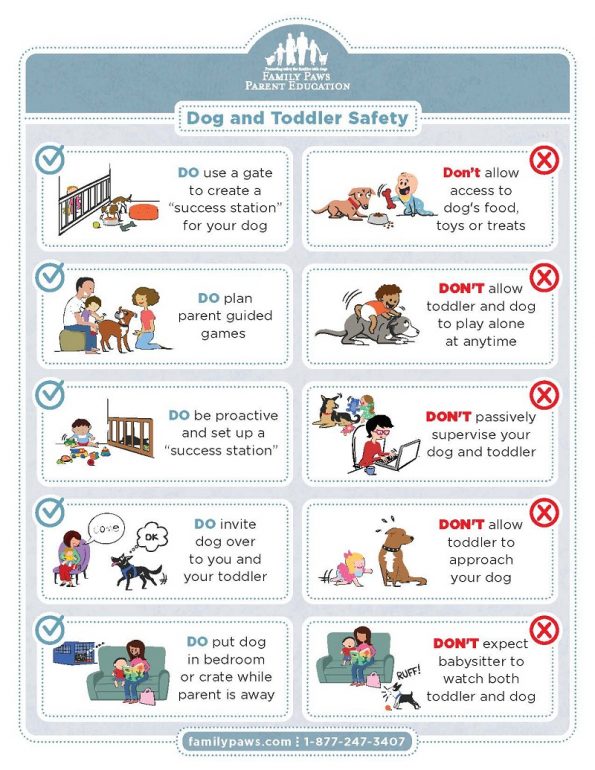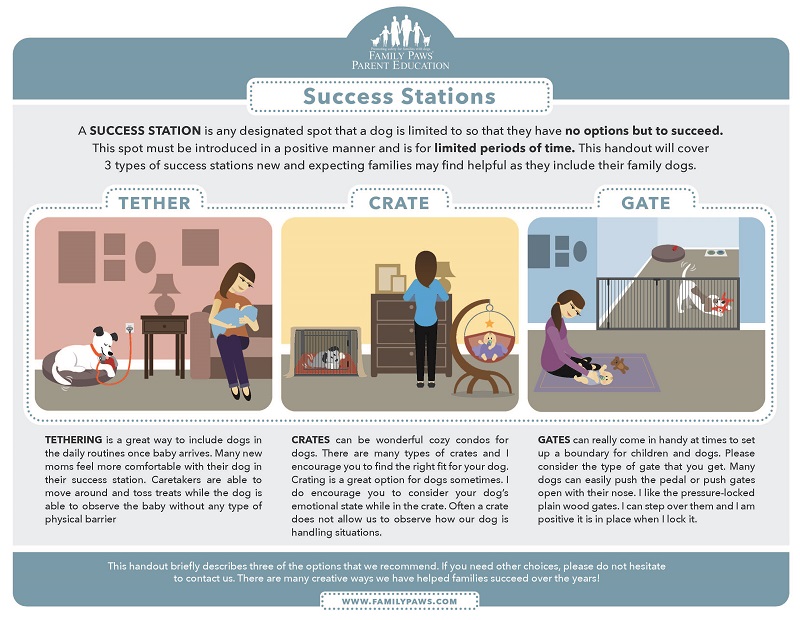
First off, congratulations! What an exciting time preparing for a new baby in your expanding home. Many owners worry about what their fur babies will think of their new human babies. Will they become anxious? Be jealous? Become fearful or aggressive? We can never predict how your dog will react, but there are many ways to prepare.
Start preparing early. Training should start WAY before you bring your new baby home. There are 3 main things that will be changing in your dogs’ life:
- The “stuff”: Start setting up the nursery and baby stuff early. Have your dog used to the nursery being gated off. Set up family room toys, cribs, high chairs, etc so your dog is used to the extra furniture before the baby arrives.
- The noise: Babies are loud! It may sound silly but play short clips of babies crying and talking to start exposing your dog to the noise. For noise sensitive dogs, start counter-conditioning by tossing them a treat when the baby cries. Reward the dog when they are calm and relaxed during the noise.
- The time: Your fur baby will not longer be the center of your universe. Practice hanging out in the nursery, with your dog receiving a chew toy or special treat while you are preoccupied. This will help create a positive association while you are in the nursery, and also train your dog to entertain themselves while you are away. If your dog sleeps with you, have them sleep in their crate a few nights a week. Frozen stuffed Kong toys and Busy Buddy toys are great tools to keep your dog occupied.
Also step up your general training. Make sure your dog does not jump onto people, quickly goes into their crate when instructed, sits on command, etc.
Bite awareness. Any dog can bite with the right stimulus. Never leave your baby or toddler alone with your dog, no matter how trustworthy. Over 800,000 people are treated for dog bites per year, and over half of those are children, mostly under the age of 7. Bites are more likely to the face. 75% of kids bitten are familiar with the dog (i.e. family or friend’s dog).
Your dogs’ history. Has your dog been around babies or children before? How did they respond? How does your dog do with change? How does your dog react when disturbed while sleeping? If your dog has shown aggression or anxiety in the past, crate training, training with a basket muzzle, and creating safe stations for your dog with gated off areas or tethered areas are important for bite prevention. Also, do not hesitate to work with a veterinary trainer/behaviorist if your dog has aggressive triggers.
The first day. Have Mom greet the dog first when arriving home without the baby in hand. Once calm, have Dad or another adult come in with the baby. Do not force an interaction between your new baby and dog. Allow your dog to come up and sniff if they desire or be curious from afar. If your dog starts to become agitated, too excited, or aggressive, toss some treats or a toy toward them but away from the baby. Your dog may need breaks with short supervised times of interaction at first.
Resources:
http://www.americanhumane.org/publication/pet-meets-baby/
Good luck, and as always, lets us know how we can help!
Dr. Coil




